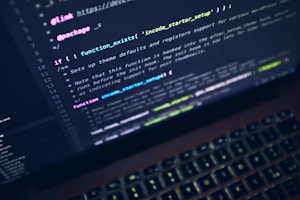Introduction
Windows 10 is one of Microsoft's most popular operating systems, but it can sometimes suffer from performance issues. This guide will provide you with some tips and tricks to optimize your Windows 10 system and boost its performance and efficiency.
1. Clean up your system
Over time, your system can become cluttered with unnecessary files, which can slow down your computer's performance. Use the built-in Disk Cleanup tool to clean up temporary files, system files, and other unnecessary files.
1. Press Win + S to open the Search menu.
2. Type "Disk Cleanup" and click on the corresponding result.
3. Select the drive you want to clean up (usually the C: drive) and click OK.
4. Check the boxes for the types of files you want to delete (e.g. temporary files, system files).
5. Click OK and then click Delete Files to confirm.2. Disable unnecessary startup programs
Startup programs are applications that automatically launch when you start your computer. Having too many startup programs can slow down your system's boot time. To disable unnecessary startup programs:
1. Press Ctrl + Shift + Esc to open the Task Manager.
2. Click on the "Startup" tab.
3. Identify the programs you don't need to start automatically and right-click on them.
4. Choose "Disable" from the context menu.3. Optimize power settings
Windows 10 has several power modes to balance between performance and energy efficiency. To optimize your power settings:
1. Press Win + X and click on "Power Options."
2. Select the power plan that best suits your needs. "Balanced" is usually a good choice.
3. Click on "Change plan settings" for the selected power plan.
4. Adjust the settings for "Turn off the display" and "Put the computer to sleep" according to your preferences.
5. Click on "Change advanced power settings" to access more advanced options.
6. Adjust the individual power settings to optimize performance and energy efficiency.4. Update drivers
Outdated or incompatible drivers can negatively impact your system's performance. To update your drivers:
1. Press Win + X and click on "Device Manager."
2. Expand the categories and locate the device you want to update.
3. Right-click on the device and choose "Update driver."
4. Select "Search automatically for updated driver software" and let Windows search for the latest driver.
5. Follow the on-screen instructions to complete the driver update.5. Disable unnecessary visual effects
While visual effects can make Windows 10 look more appealing, they can also consume system resources. To disable unnecessary visual effects:
1. Open File Explorer and right-click on "This PC" (or "My Computer") and select "Properties."
2. Click on "Advanced system settings" in the left sidebar.
3. In the "Performance" section, click on "Settings."
4. In the "Visual Effects" tab, select "Adjust for best performance" or manually choose the effects you want to disable.
5. Click OK to save the changes.6. Disable unnecessary services
Windows 10 comes with many services that run in the background, consuming system resources. Disabling unnecessary services can help improve performance. However, it's important to be cautious when disabling services, as some may be essential for your system.
1. Press Win + R to open the Run dialog box.
2. Type "services.msc" and press Enter to open the Services window.
3. Locate the service you want to disable, right-click on it, and select "Properties."
4. In the "Startup type" dropdown menu, select "Disabled" to prevent the service from starting automatically.
5. Click OK to save the changes.7. Use an antivirus
Malware can significantly slow down your system and compromise its security. Install a reputable antivirus software and perform regular scans to keep your system clean.
8. Update Windows
Microsoft regularly releases updates for Windows 10 to fix bugs, improve performance, and enhance security. Make sure your system is up to date by installing the latest Windows updates.
1. Press Win + I to open the Settings app.
2. Click on "Update & Security."
3. Click on "Check for updates."
4. If updates are available, click on "Download and install" to install them.
5. Restart your computer if prompted.Conclusion
By following these tips and tricks, you can optimize your Windows 10 system and enhance its performance and efficiency. Regularly performing maintenance tasks and keeping your system up to date will help ensure a smooth and efficient computing experience.


